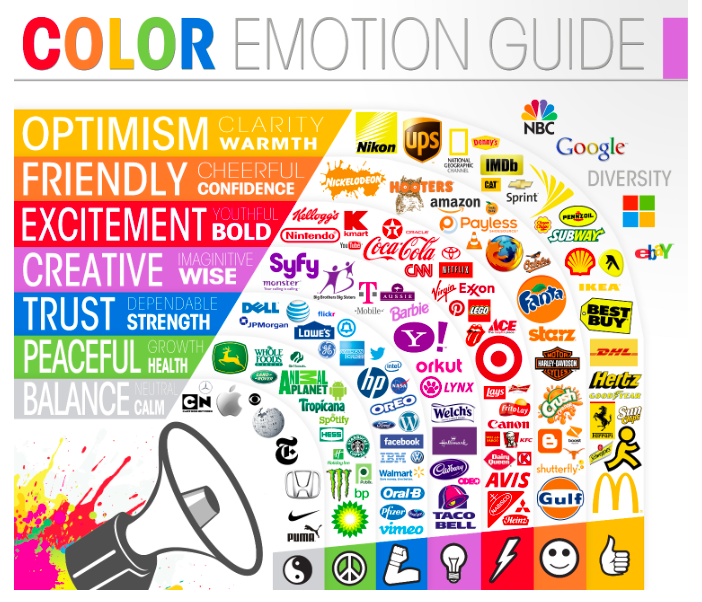Of all the terms you associate with marketing, psychology may be the last to come to mind. Yet, advertising is all about persuasion. Motivating people to act is at the foundation of your marketing efforts.
How to Use Marketing Psychology
At the most basic level, marketing involves making an emotional connection with your audience. You are demonstrating that you have the answers they seek.
Marketing experts spend years learning about the psychology of color and images. They spend an equal amount learning about the psychology of content and how to use the right words to get the response they want. In fact, changing the words you use to describe a product changes the reader’s perception of that item. Wouldn’t you rather eat something described as delicious, or will tasty suffice?
One of the most effective ways to use strategic marketing psychology is through content creation, which covers all the eCommerce marketing basics. It also incorporates seven psychological principles of marketing that we’ll discuss below.
1. Reciprocity
We are conditioned on psychological quid-pro-quo. If someone does something for you, you naturally want to return the favor. This is easily demonstrated by the increase in sales when a vendor offers free product samples while you’re in the supermarket.
The principle of reciprocity works in eCommerce marketing by dropping what’s referred to as “lead magnets”. Free trials, an online course, or a free eBook that compliments your main offering fall under this category.
2. Scarcity
How would you react if you suddenly discovered that an item is hard to find or a product line is being discontinued? Even if it wasn’t something you were in the market for, chances are you’d be more likely to buy it while you still can. Some of us remember the infamous contraceptive sponge episode of Seinfeld.
Scarcity feeds the Fear of Missing Out (FOMO) that drives many consumers to act and act quickly. This is best illustrated by the practice of placing counters on product pages. The counters warn shoppers that there are only so many of a particular item left in stock. My discount travel site tells you how many seats are still available at their very low advertised price. Urgency is a related concept that drives people to “click here” or “act now”.
3. Color Psychology
Color is something that we’re conscious of in advertising, but it has a very powerful subliminal effect. That’s why web designers will craft a specific color scheme when building pages. It also accounts for visual recognition even if you don’t see any actual text.
For example, we all know that Tide comes in a bright yellow and red package. Doritos proved this point with their no-name ad campaign featuring only a colored bag and yellow triangle.
How you build your eCommerce site and the colors you choose should reflect how you want your brand to be perceived. Your colors and logo will also create a subconscious association that becomes part of your brand identity. If you do it right, every time a customer sees that particular color combination, it will call up your brand.

4. Commitment
Commitment and consistency are related to stability. Not only do people want this in a brand, they also want to show that they are consistent and stable. It’s a subconscious way of saying “You can count on me.”
Brands can leverage this by extracting bite-sized commitments that add up. One strong example of this is enticing people to sign up for a newsletter, which can be used to increase brand awareness.
Another example is offering incremental payment, which is successfully used to up sell. We’ve all supersized or added more items to the cart. Often, the up sell makes it as easy as checking a box that says “Save an extra X percent” by purchasing these two items, or buying a larger amount for a few cents more.
5. Authority
If you wanted medical advice, would you go to your social media or a site like Web MD? When you create an air of authority in your industry or niche, you’re building trust.
You can gain authority through your eCommerce platform by gathering social proof. You can also add a blog to your business site and create outbound links, or guest post on websites that have already demonstrated authority.
6. Social Proof
It’s a fact that people trust the opinions of their peers over paid advertising any day. Leveraging social proof in the form of customer testimonials, reviews, social shares, and word of mouth provides some of the best ROI for your marketing budget. Not only is trust higher, but much of it is free and user-generated.
7. The Baader-Meinhof Phenomenon
Have you ever suddenly noticed that a certain product or brand is everywhere? This is known as the Baader-Meinhof Phenomenon, or frequency effect, and it’s based on the processes of selective attention and confirmation bias. The latter is something that’s big on social media, for good or bad. We’re more likely to pay attention to and share things if they confirm our preconceived notions.
The idea is that, when people suddenly notice a product or brand name wherever they look, it will pique their curiosity. This compels them to find out what all the fuss is about. It begins with raising brand awareness and then slowly nurturing that awareness with continued exposure. That exposure can exist in many forms, such as things like targeted emails, landing pages, and social media posts.
Final Thoughts
One of the most important aspects of marketing your eCommerce project is matching your mission with consumer or B2B motivations. The best use of psychology in marketing is subtle and crafted in a way that hits all of the right emotional triggers.
If you need some help energizing your marketing strategy, a marketing professional will work with you to engage your audience in a meaningful way.



































